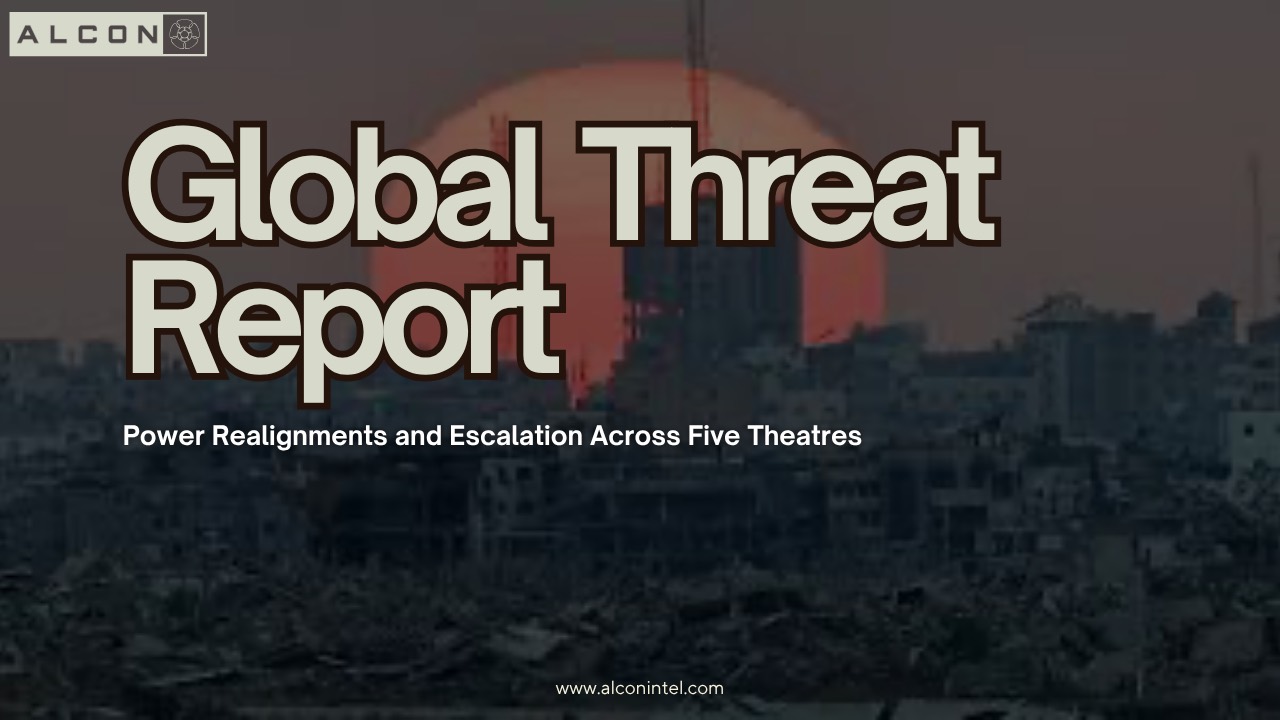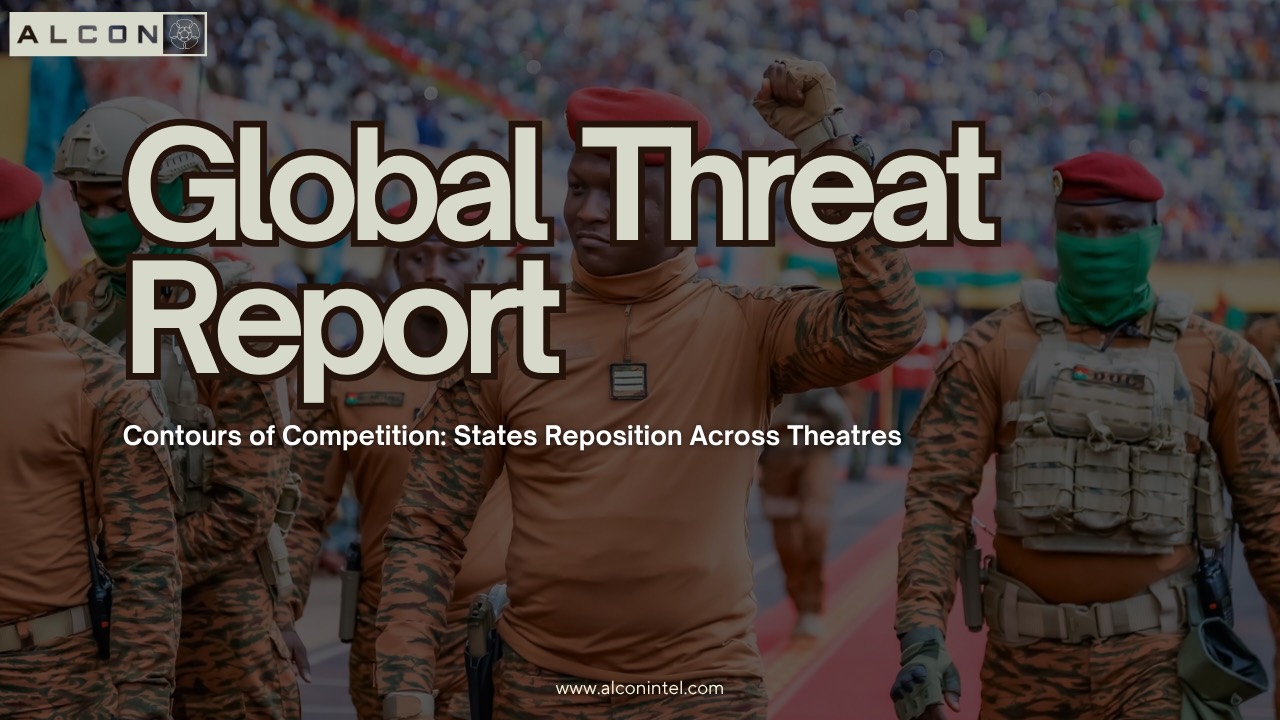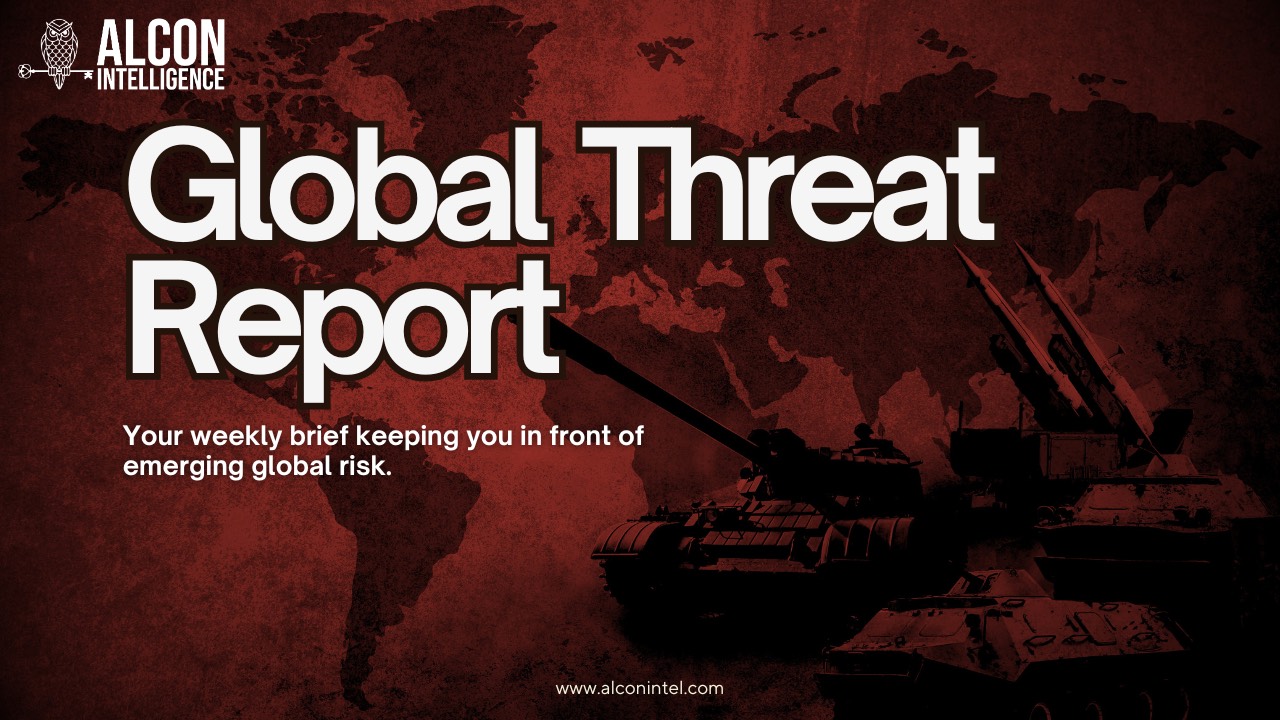An Introduction to Emerging Threats

The international system is entering a phase defined by intensifying great-power rivalry and disruptive transnational challenges. This newsletter is dedicated to examining these emerging threats and their impact on the global order, providing sharp, realistic analysis from a Western perspective. Established norms and power balances are under strain: new conflicts have erupted, authoritarian powers are asserting themselves, and even the weather seems to wage war on stability.
As one think-tank observes, new layers of conflict in the Middle East, a downward spiral in U.S.-China relations, and the dangers of a governance deficit in rapidly advancing Artificial Intelligence are among the top risks for 2025. Some U.S. allies warn that the current alignment of hostile state actors poses the gravest challenge to global order since World War II. In response, this newsletter will enable you to anticipate the coming storm by focusing on strategic realities over wishful thinking. Each issue applies the DIME framework - Diplomatic, Information, Military, and Economic - to break down how these threats are influencing the world around us.
Readers can expect no-nonsense insights into diplomacy, cyber incidents, arms build-ups, and economic warfare - all examined by the ALCON Intelligence team. The coming years will test whether the international order bends or breaks. By following this newsletter, you will be equipped with the knowledge and context to interpret events in this tumultuous era. In a world of rising risks, an informed perspective is the first line of defense.

The DIME Framework
For new readers, DIME stands for Diplomatic, Information, Military, and Economic - four key instruments of national power. Governments wield these tools to pursue their interests: diplomacy to build alliances or apply pressure, information to sway narratives or deceive adversaries, military force for defense or coercion, and economic might to reward or punish. Using the DIME framework, we will assess how state and non-state actors exploit each domain to challenge the status quo. This structured approach sheds light on both the means and motives behind emerging threats, helping readers grasp not just what is happening, but how and why it matters.
Diplomatic Challenges
Diplomacy is often the first arena where geopolitical contests play out - and today it is under siege. Revisionist powers like China and Russia are coordinating to undermine Western influence across the globe. Beijing has leveraged economic statecraft (e.g. the Belt and Road Initiative) to forge “new centres of gravity, challenging the economic, normative and institutional pillars of Western hegemony”. Moscow and Beijing alike court developing nations with promises of an alternative multipolar order, promoting new forums and financial systems that compete with Western-led institutions.

At the same time, traditional diplomatic norms are eroding. International bodies struggle to resolve crises as great-power vetoes and rivalries block concerted action. Alliances are being tested: NATO faces debates over burden-sharing and strategy toward Russia, while in Asia-Pacific there are growing doubts about U.S. staying power amid China’s rise. Even regional politics are in flux, with Middle Eastern states hedging between Washington and Beijing.
Western officials now speak openly of an “era of crisis” in international affairs. Japan’s latest defense review warns that the existing order of world peace is being seriously challenged,” calling the security environment “the most severe and complex of the post-war era. In short, the diplomatic fabric of the post-1945 world order is fraying. Whether competition can be managed through dialogue – or degenerates into open hostility – will depend on how nations use diplomacy in the face of these tests. This newsletter will track those diplomatic fault lines, from high-profile summits to quiet power plays, as arenas where the future of global stability is being negotiated – or sabotaged.

This newsletter is powered by Global Feed - a platform built to help analysts and enthusiasts monitor, track, and make sense of global risk in real time. If you want to see the tools we use behind the scenes, check them out.
Information Warfare
Information has become a weapon – and a battlefield – in its own right. Information warfare now spans propaganda, cyber attacks, espionage, and the weaponisation of social media to influence societies. Russia and China have both turned these tactics into art forms and increasingly converge their efforts. By spreading false narratives and sowing confusion, they aim to undermine public trust in institutions, influence electoral processes, and weaken alliances such as NATO and the EU.
Kremlin-backed trolls and Beijing’s state media both push divisive content and conspiracy theories, exploiting the openness of democratic societies. Cyberspace is another frontline. Foreign adversaries regularly infiltrate networks to steal data, disrupt services, or pre-position for sabotage. U.S. intelligence warns that China is the most active and persistent cyber threat to American government and critical infrastructure – even preparing malware that could cripple U.S. systems in a crisis.
Military Flashpoints and Security Threats
Hard power is back at center stage, as conflicts and arms races raise the risk of war. Nowhere is this more evident than in Eastern Europe, where Russia’s full-scale invasion of Ukraine shattered decades of peace. This war - the largest in Europe since 1945 - has increased instability tenfold.
NATO countries, jolted by Moscow’s aggression, are reinforcing their defenses and unity. One allied defense chief even warned that Russia could regain the ability to threaten NATO territory within five years. Despite heavy losses, the Kremlin shows no sign of relenting in its revisionist campaign, even rattling nuclear sabers to intimidate the West.

In the Indo-Pacific, an assertive China is rapidly building a world-class military aimed at eroding U.S. influence. Beijing’s saber-rattling around Taiwan and aggressive maneuvers in the South China Sea have U.S. allies on edge. Japan now calls the China-Russia-North Korea axis the “gravest threat” of the post-WWII era and is rearming accordingly. Across the region, nations are bolstering their militaries and security ties in preparation for potential conflict - one that neither side openly seeks but for which both are grimly planning.
Other hotspots further complicate the picture. In the Middle East, Iran’s backing of militant proxies and its advancing nuclear program continue to menace regional stability and U.S. interests. North Korea’s expanding missile arsenal, meanwhile, keeps East Asia on alert. And despite the focus on state-based threats, terrorism remains a persistent asymmetric danger: extremist networks and lone actors still pose a persistent and multifaceted threat to civilian security. Additionally, emerging military technologies threaten to upend deterrence. Hypersonic missiles and anti-satellite weapons, for example, could strike with little warning and knock out critical assets, raising the chance of miscalculation in a crisis.
These military flashpoints have created a world on edge. The risk of localised conflicts escalating into wider wars is the highest it has been in decades. This newsletter will provide clear-eyed analysis of these security challenges, from warzones and arms competitions to efforts at conflict de-escalation, always with an eye on what they mean for global peace or peril.

Economic Warfare and Coercion
Global rivalries are increasingly playing out through economic means. Trade, finance, and resource leverage have become weapons in the strategic competition. China and Russia, among others, seek to rewrite rules and realign economic networks in their favor. They are cultivating alternate trading blocs and financial systems as a counterweight to the Western-led order, promoting alternative systems to compete with the U.S., primarily in trade, finance, and security. Beijing’s use of Belt-and-Road investments and Moscow’s energy exports are both aimed at buying influence and binding other countries closer, while reducing reliance on Western commerce.
Economic coercion is now a common tool of statecraft. Moscow’s cutoff of gas to Europe amid the Ukraine war demonstrated how supply dependence can be turned into pressure. Beijing, for its part, has slapped punitive trade measures on U.S. allies (from Australian wine to Korean tourism) to dictate political decisions. Conversely, Western powers have unleashed unprecedented financial sanctions to isolate Russia’s economy and constrain its war effort. The result is a fragmenting global economy, as nations hedge their bets and prioritise security over interdependence. Observers note that geoeconomic conflict has surged as a top-tier risk in recent years.
You’re reading the Global Threat Report from ALCON Intelligence. We’re an independent intelligence company based in New Zealand, dedicated to giving you clear, realistic insights on the world’s most important risks. Our goal is to cut through the noise and provide the same level of analysis trusted by professionals - without the jargon or the spin.
Whether you’re new here or have been following us for a while, thanks for reading and for being part of our growing community. If you have questions, want to see something covered, or just want to talk shop, reply to this email - we read every response.





Responses